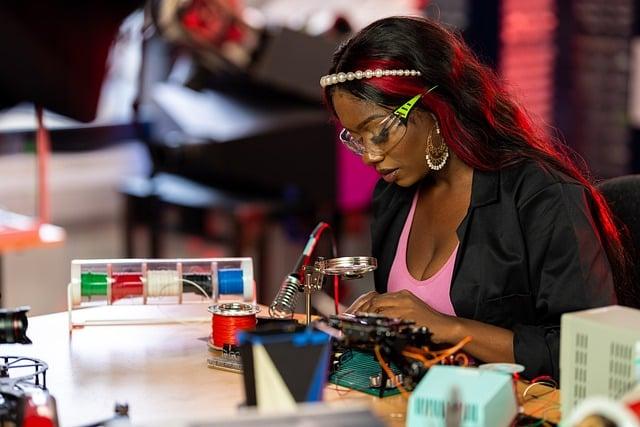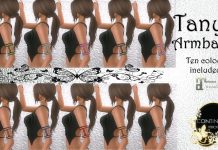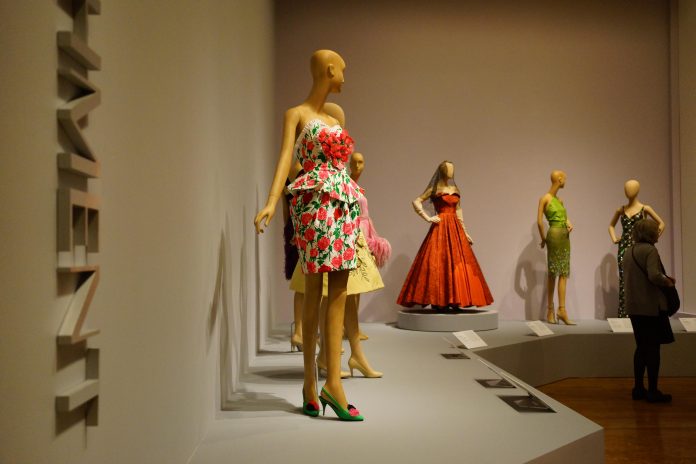In the ever-evolving tapestry of fashion, a perennial debate weaves through the fabric of the industry: should the focus be on boundless creativity or the allure of mass-market appeal? This conundrum sits at the heart of fashion’s dual identity, where visionary artistry meets commercial pragmatism. On one side, designers revel in the freedom to push boundaries and redefine aesthetics. On the other, the demands of global markets call for accessibility and widespread acceptance. As we unravel this complex narrative, we explore whether the future of fashion lies in the hands of the avant-garde or in the embrace of the everyday, inviting readers to consider the delicate balance between innovation and inclusivity.
Balancing Innovation with Accessibility
In the ever-evolving world of fashion, the challenge lies in harmonizing groundbreaking design with universal accessibility. Designers often find themselves at a crossroads: should they push the boundaries of creativity or cater to a wider audience? Striking this balance is crucial, as innovation can sometimes alienate those who find avant-garde styles inaccessible, while mass-market appeal risks diluting artistic expression.
- Inclusivity in Design: Fashion must embrace diverse body types, genders, and cultures, ensuring everyone feels represented.
- Technology as a Bridge: Utilizing advancements like AI and 3D printing can democratize fashion, offering customizations that resonate with individual tastes.
- Sustainability Considerations: Both creative and mass-market fashions must address environmental impacts, promoting eco-friendly practices.
By weaving together innovation and accessibility, the fashion industry can craft a narrative that speaks to both the visionary and the everyday consumer, ensuring that style remains a universal language.
Understanding Consumer Desires and Cultural Influence

In the intricate tapestry of fashion, understanding what consumers truly desire often involves unraveling the threads of cultural influence. Consumer desires are not merely dictated by personal taste but are deeply woven into the fabric of societal norms and cultural narratives. As fashion designers and brands contemplate whether to lean towards creativity or mass-market appeal, they must consider these underlying currents. Cultural trends can dramatically shift consumer preferences, making certain styles more appealing at different times. The key lies in identifying these shifts and responding with designs that resonate.
- Globalization: Cultural exchange has blurred lines, making international styles more accessible and desirable.
- Tradition vs. Modernity: Balancing innovative designs with traditional influences can captivate diverse audiences.
- Identity Expression: Consumers often use fashion as a medium to express their cultural identity and individuality.
Fashion, at its core, is a dialogue between the creative vision of designers and the cultural context of their audience. By understanding and respecting cultural influences, brands can create collections that not only capture the essence of creativity but also cater to the nuanced desires of the mass market.
The Role of Technology in Shaping Fashion Trends

- 3D Printing and Customization: With the advent of 3D printing, designers can now create intricate patterns and unique pieces that were previously impossible or too costly to produce. This technology allows for unparalleled customization, enabling consumers to become part of the design process and express their individuality through bespoke garments.
- AI and Predictive Analytics: Artificial Intelligence is revolutionizing the way fashion trends are identified and forecasted. By analyzing vast amounts of data from social media, runway shows, and retail patterns, AI can predict emerging trends, allowing brands to cater to both niche markets and broader audiences with precision.
- Virtual and Augmented Reality: Virtual showrooms and augmented reality experiences are transforming the shopping experience, offering consumers the ability to try on clothes virtually. This not only enhances convenience but also encourages brands to innovate in design and presentation, balancing creative expression with market demands.
While technology offers a myriad of tools for creative exploration, it also brings the challenge of aligning these innovations with commercial viability. The intersection of creativity and technology presents an opportunity for brands to redefine their identity, offering products that captivate both the individualistic spirit and the mass-market appeal. By leveraging these advancements, fashion can become more inclusive, sustainable, and personalized, ultimately reshaping the industry landscape.
Crafting a Strategy for Sustainable Fashion Appeal

In the quest for a sustainable fashion model, balancing creativity with mass-market appeal is crucial. Designers and brands must craft strategies that not only captivate the imagination but also resonate with a broader audience. To achieve this, consider:
- Innovative Materials: Prioritize eco-friendly fabrics that offer unique textures and aesthetics.
- Timeless Design: Focus on creating pieces that transcend fleeting trends, offering longevity and versatility.
- Transparent Practices: Embrace and communicate sustainable sourcing and production methods to build trust and appeal.
By integrating these elements, fashion can maintain its allure while promoting a more sustainable future. The challenge lies in weaving creativity into the fabric of mass-market strategies, ensuring both ecological and economic viability.





































